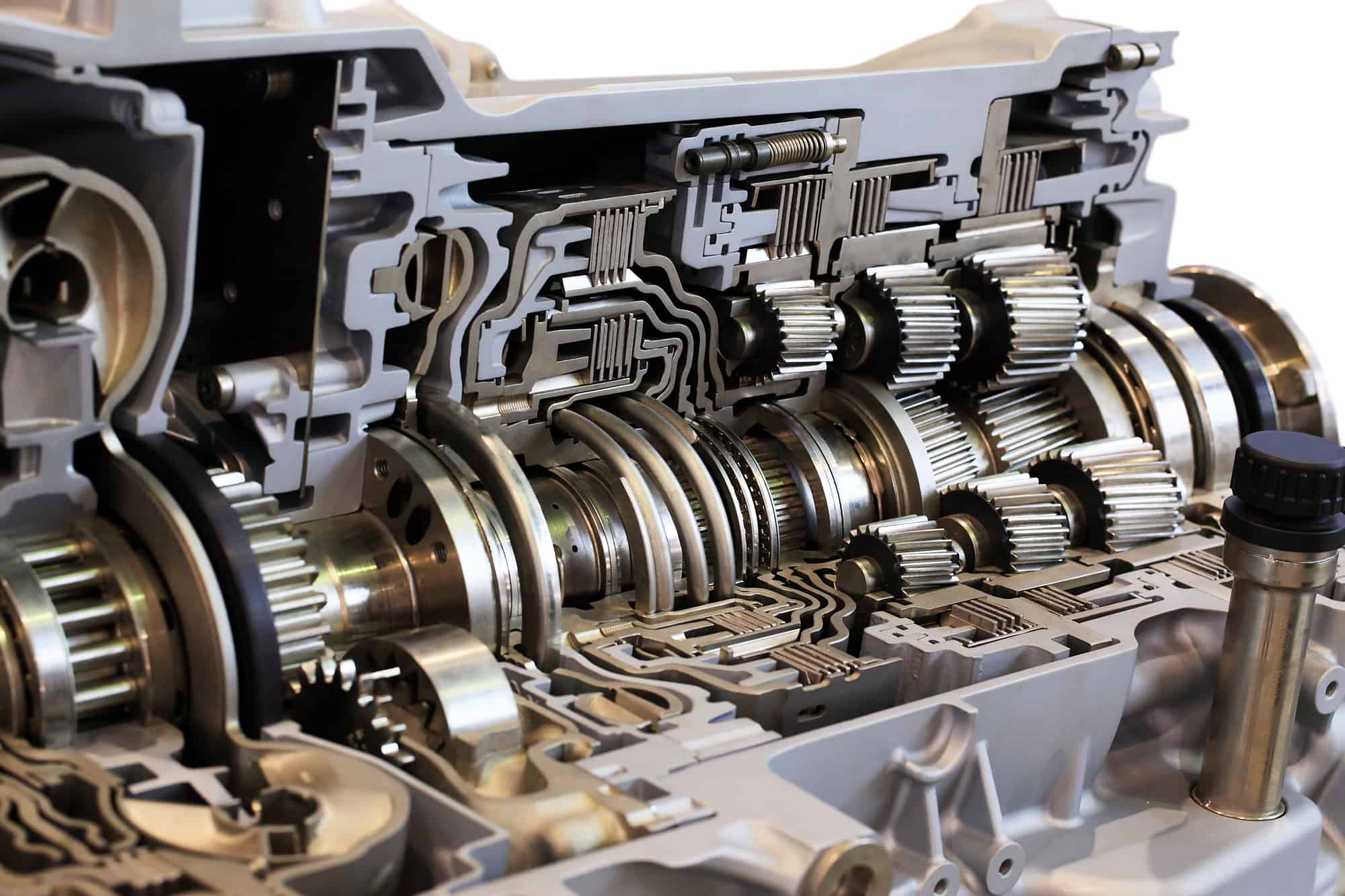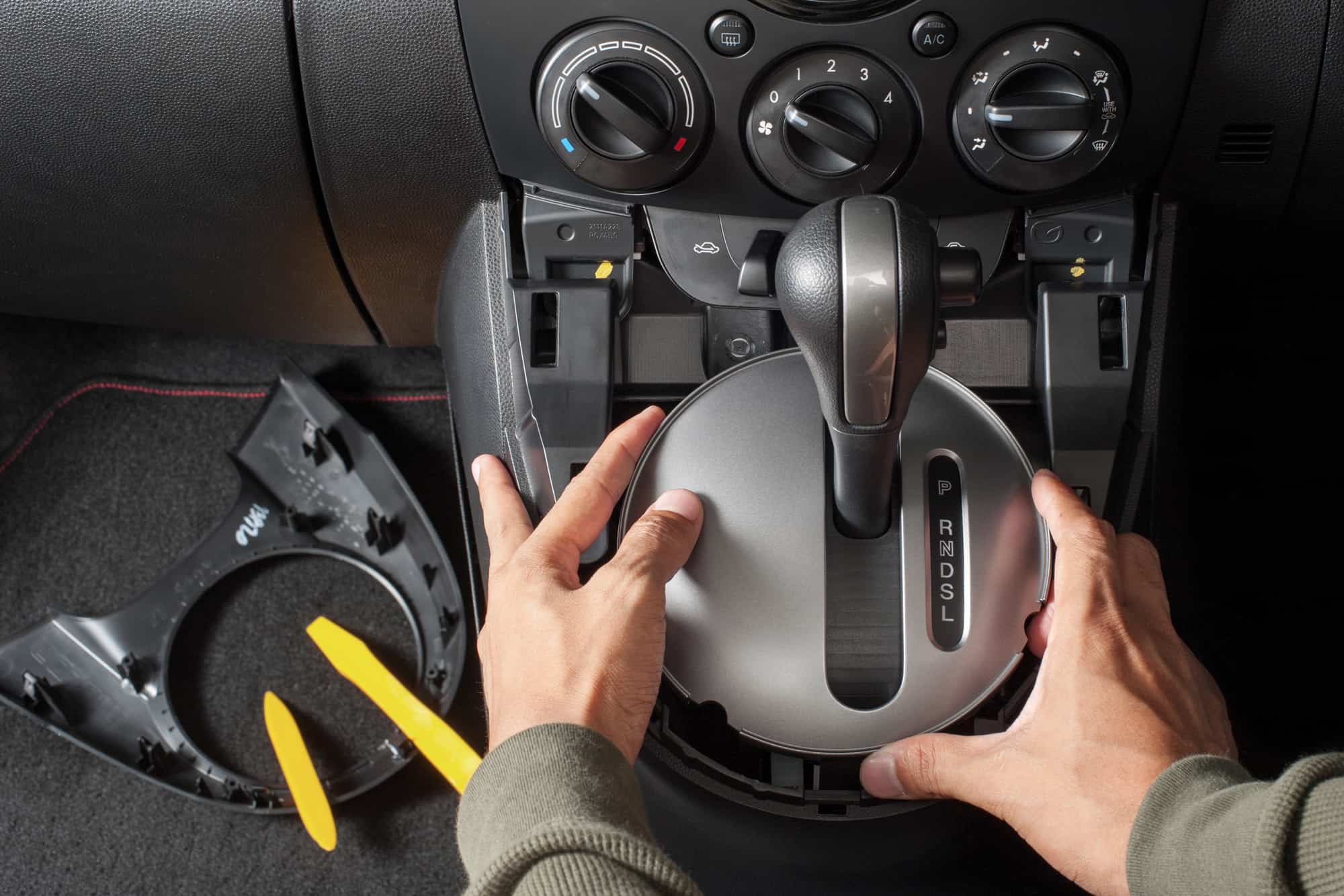The reasons a car won’t go into reverse include a faulty transmission control module, worn or damaged reverse gear teeth, a faulty transmission position sensor, a faulty reverse lock-out pull ring and old or dirty transmission fluid.
The reasons why you can’t select reverse gear can differ between a manual and automatic gearbox. Often the problem is an electronic one in an automatic gearbox (transmission) and this can be fixed by replacing the broken module in question.
A manual gearbox that won’t go into reverse can be more difficult to fix. The problem is often caused by worn out or damaged gears within the gearbox, and this can make the repair much more expensive. You also have to factor in the clutch assembly and this can also make things more complicated.
As an Amazon Associate we earn from qualifying purchases.
In this article, I’ll explain the various causes of why your car or truck won’t go into reverse, and how much it can cost to repair the problem.
7 Reasons Your Car won’t go in reverse
If your car won’t go in reverse sometimes, or not at all, then this is a sure sign that something is worn out or damaged in the gearbox.
It can be difficult to diagnose exactly where the problem is, as the gearbox/transmission is a complicated piece of engineering. There are lots of different things that can go wrong, and these can be different depending on whether your gearbox is a manual or automatic.

The inside of a transmission is pretty complicated with lots of moving parts
I always start by checking the ECM for error codes. This will give a rundown of any error codes that may be stored in relation to the problem. There are literally dozens of possible error codes associated with the transmission. This makes it easier to narrow down the source of the problem.
The other thing I like to do before getting my hands dirty is to take the car for a drive (if possible) and see if I can feel what’s going on. This is especially useful if the gearbox is a manual and there is a clutch.
Here are some of the main reasons why a vehicle won’t go into reverse gear.
1. A Faulty transmission control module
If the transmission control module (TCM) is faulty, it will usually lead to problems selecting one or more gears. The TCM is supposed to select the correct gear within the gearbox when you choose one with the gear selector. It also is in charge of changing gear when you are driving.
If it is faulty, you may see the check engine light on the dashboard and you should find the error code P0700, stored in the ECU. A faulty transmission control module will often have other symptoms such as problems changing up and down through the gears, getting stuck in neutral or first gear and randomly changing gear when you don’t want it to.
2. A Faulty transmission position sensor
A bad transmission position sensor is a very common reason why your car won’t go into reverse. This sensor is found in automatic gearboxes and it works with the transmission control module to select the correct gear.
When you move the gear selector, the transmission position sensor (also known as the park neutral position switch ) will signal the transmission control module to select the appropriate gear.
A faulty transmission position sensor will usually trigger the error code P0705 – Transmission Range Sensor Circuit Malfunction (PRNDL Input). An error will be triggered if the sensor sends the an out of range signal to the ECU, no signal or a signal while the vehicle is moving.
A faulty Park Neutral Position switch (PNP) can also trigger the code P0850 – Park/neutral position (PNP) switch -input circuit malfunction.
It’s worth noting that there are several types of transmission position sensor switches and this can affect the cost and difficulty of the repair.
3. Damaged reverse gear teeth
Sometimes a car won’t go into reverse gear, but otherwise drives fine. This is a problem that can develop in manual gearboxes. It is often found in older vehicles, or those that have been abused.
All forward gears in a manual gearbox are synchromesh gears. This means that they have a small device like a clutch that assists in slowing or increasing the speed of the gear that you have selected so that it can perfectly mate with the teeth of the moving transmission. This stops the gears from grinding against one another and causing damage.
Reverse gear is not a synchromesh gear. This is because when you select reverse gear you are usually (or should be) stopped so it is not needed.
If you regularly try to select reverse gear while still moving forward, this is going to damage the reverse gears in your gearbox. It can also happen through improper use of the clutch, or if the clutch is nearly worn out or warped.
The reverse gear teeth are more pointed that other gears, to allow them to mesh more easily. These teeth can wear down over time and this will make it harder to select reverse gear.
An easy way to test for worn gear teeth is to select first gear before selecting reverse. By selecting first gear you are forcing the two gears to stop completely before they mate. If you can easily select reverse after first gear then the problem probably lies with the gears themselves.
4. Old or dirty transmission fluid
Over time the transmission fluid (or gearbox oil if it’s a manual gearbox) will become less effective at lubricating the gearbox. It will usually change color, collect dirt and debris and will loose its lubricating properties due to the extreme heat and pressure it endures while you are driving.
This can lead to problems with the performance of the transmission. Some common symptoms of worn out transmission fluid include slipping gears, trouble selecting gears (including reverse gear) and grinding noises from the transmission.
It’s a good idea to check the condition of the transmission fluid regularly. It will usually change from bright red in color to dark brown or black when it is worn out. It will also have a burnt odour.
5. The transmission is leaking
If the transmission has a leak, then chances are the fluid level in the transmission is going to be too low. If left unfixed, a leaky transmission is going to cause long-term damage.
An automatic gearbox (transmission) uses pressure created by the transmission fluid to change gears. If the transmission is low on fluid then it will be more difficult to change gears as there will not be enough fluid present to lubricate the gears and to create the pressure necessary to select a gear.
One of the first symptoms of a transmission that is low on fluid is not being able to change gears.
Is a Car Leased from a Dealership More Prone to Reverse Gear Issues?
When leasing a car, considerations such as the potential for reverse gear issues may arise. However, whether a car leased from a dealership is more prone to such issues is subjective and depends on various factors. It is advisable to thoroughly inspect the vehicle, conduct a test drive, and review the lease terms, including maintenance responsibilities, to make an informed decision.
6. A problem with the transmission valve body
The transmission valve body houses the valves that are used to change gears in an automatic transmission. Transmission valves can be hydraulic or electronic. Electronic transmission valve bodies are more common in modern cars. These use electronic solenoid valves to control the valve circuits. The whole system is managed by the transmission control module.
Any problems with the operation of the transmission valve body, or one of its parts is going to cause problems when selecting reverse gear. When you select reverse gear, the transmission control unit activates the reverse gear transmission solenoid, which sends transmission fluid into the reverse valve body to engage the correct gear. If there is a problem with the valve body, reverse solenoid or the transmission fluid, this can cause a problem selecting reverse gear.
Is a Dead Key Fob Battery the Cause of My Car Not Going in Reverse?
If your car is not going in reverse, a dead key fob battery could be the culprit. Before panicking, consider key fob battery solutions. Swap out the old battery for a new one and see if that resolves the issue. It’s a simple fix that could save you from costly repairs.
What are the possible reasons why my car won’t go in reverse if there’s no power to the dash or ignition?
If your car won’t go in reverse and you have no power to the dash or ignition, it could be due to power issues with ignition. A faulty ignition switch or a blown fuse can cause a loss of power, preventing the car from going in reverse. It’s best to have a mechanic diagnose the issue.
Can Off-Track Windows Cause a Car to Not Go in Reverse?
Off-track windows can hinder a car’s functionality, but they are unlikely to prevent it from going in reverse. For fixing offtrack windows solutions prevention, regular inspection and maintenance can help prevent this issue from occurring, ensuring smooth window operation and optimal vehicle performance.
7. Problem with the Shift Selector Mechanism
Sometimes the problem can be with the shifting cables, the shifting fork or the shifter linkage bushings.
Both manual and automatic gearboxes use cables to connect the gearshift or gear selector to the transmission. Automatic transmissions usually have one cable, whilst manual gearboxes have two cables. The cable(s) connect the gearbox to the transmission via the cable shifter linkage assembly. If there is a problem with any part within the assembly, then this can prevent you from selecting a gear.
The most common problem with the shifter assembly is with the cable. As the cable ages, it can stretch and sometimes break. This will prevent you from selecting reverse gear.
What is The Cost of repairing a car that won’t go in reverse?
As outlined above, there are many reasons why you may not be able to select reverse gear in your car. Gearboxes are usually expensive to diagnose and repair.
Most mechanics will charge around $80-$100 to run a live diagnostic. This can indicate if there are any problems with the electronic components within your gearbox. A faulty transmission position sensor isn’t too difficult to replace, and will cost between $200 and $300, depending on the vehicle. If the transmission control module is faulty this will cost anywhere from $500 to $800. You might be able to save some money if you opt for a refurbished module and if you source the part yourself.
If the problem is caused by low transmission fluid then expect to pay around $100 to have it changed. If the transmission is leaking, then it is going to cost an extra $150 to $200 to replace any leaking pipes, joints or gaskets before the fluid can be replaced.
Problems with the transmission valve body can be very costly to repair. This is because it will involve removing the entire transmission and replacing the valve body with a new or refurbished unit. The cost of the valve body itself can be anywhere from approximately $300 to $500, depending on the vehicle model. You can expect to pay a further $400 to $500 in labor costs to get it fitted.
If the problem is with the shifter assembly, then this is a lot cheaper to repair. You can expect to pay $100 to $200 to have a shifter cable or linkage bushing replaced.
As an Amazon Associate we earn from qualifying purchases.





I’ve been experiencing an issue where my car won’t go into reverse gear, and I’m trying to understand if there could be a simple fix before I take it to a mechanic. Could low or dirty transmission fluid be causing this problem, and if so, how can I check the condition of my transmission fluid myself?
Is it possible that driving habits, such as frequently shifting into reverse while still moving forward, can exacerbate these issues or contribute to a car not going into reverse?